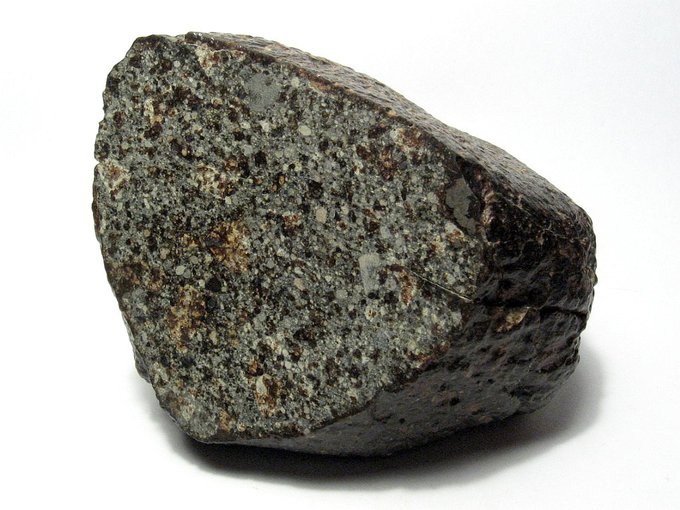
Oct. 3, 2018
Research Highlight
Impact Experiments on a Chondrite Meteorite

A 700g individual of the NWA 869 meteorite. Chondrules and metal flakes can be seen on the cut and polished face of this specimen.Image credit: H. Raab, Wikimedia Commons.
A study of the Northwest Africa 869 (NWA869) meteorite has provided new information about the physical characteristics of asteroids. NW869 refers to a collection of samples from an L chondrite strewn field discovered in Morocco in 2000. By performing hypervelocity impact experiments on a sample of NW869, researchers examined the effects of the meteorite’s porosity on crater production, catastrophic disruption, momentum transfer, and dust production.
The study, “Hypervelocity cratering and disruption of the Northwest Africa 869 ordinary chondrite meteorite: Implications for crater production, catastrophic disruption, momentum transfer and dust production on asteroids,” was published in the journal Planetary and Space Science. This work was supported by the Emerging Worlds Program. The NASA Astrobiology Program provides resources for Emerging Worlds and other Research and Analysis programs within the NASA Science Mission Directorate (SMD) that solicit proposals relevant to astrobiology research.